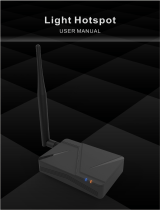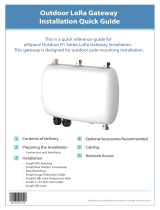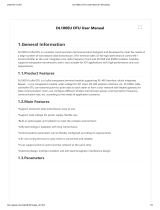Acrel AWT100, a wireless data conversion module, offers various communication options including 2G, 4G, NB-IoT, LoRa, LoRaWAN, GPS, WiFi, Ethernet, and Profibus. With its ability to collect data from up to 30 MODBUS RTU devices, it supports 5 register address fields for each device with an address range of up to 64. The AWT100 can be configured to preset alarm addresses and values, enabling alarm triggers for specific MODBUS address ranges. It also supports transparent transmission protocols, MQTT, and customized protocols.
Acrel AWT100, a wireless data conversion module, offers various communication options including 2G, 4G, NB-IoT, LoRa, LoRaWAN, GPS, WiFi, Ethernet, and Profibus. With its ability to collect data from up to 30 MODBUS RTU devices, it supports 5 register address fields for each device with an address range of up to 64. The AWT100 can be configured to preset alarm addresses and values, enabling alarm triggers for specific MODBUS address ranges. It also supports transparent transmission protocols, MQTT, and customized protocols.




















-
 1
1
-
 2
2
-
 3
3
-
 4
4
-
 5
5
-
 6
6
-
 7
7
-
 8
8
-
 9
9
-
 10
10
-
 11
11
-
 12
12
-
 13
13
-
 14
14
-
 15
15
-
 16
16
-
 17
17
-
 18
18
-
 19
19
-
 20
20
-
 21
21
Acrel AWT100, a wireless data conversion module, offers various communication options including 2G, 4G, NB-IoT, LoRa, LoRaWAN, GPS, WiFi, Ethernet, and Profibus. With its ability to collect data from up to 30 MODBUS RTU devices, it supports 5 register address fields for each device with an address range of up to 64. The AWT100 can be configured to preset alarm addresses and values, enabling alarm triggers for specific MODBUS address ranges. It also supports transparent transmission protocols, MQTT, and customized protocols.
Ask a question and I''ll find the answer in the document
Finding information in a document is now easier with AI
Related papers
Other documents
-
Linxdot LD-1002 User guide
-
 LUXSHARE-ICT LUXSHARE ICT LRDN106 Light Hotspot User manual
LUXSHARE-ICT LUXSHARE ICT LRDN106 Light Hotspot User manual
-
 Hon Lin Technology GME840U-915U Installation guide
Hon Lin Technology GME840U-915U Installation guide
-
 MiND DL100CN User manual
MiND DL100CN User manual
-
Robustel R3000 LG User guide
-
Four-Faith F2920D User manual
-
Robustel RobustOS Software Manual User manual
-
ebyte E95/E96-DTU-V8 Wireless Modem User manual
-
Four-Faith LoRaWAN Embeded NS User manual
-
Multitech MTCDT-LAP3-246A-915-AU Software Guide























